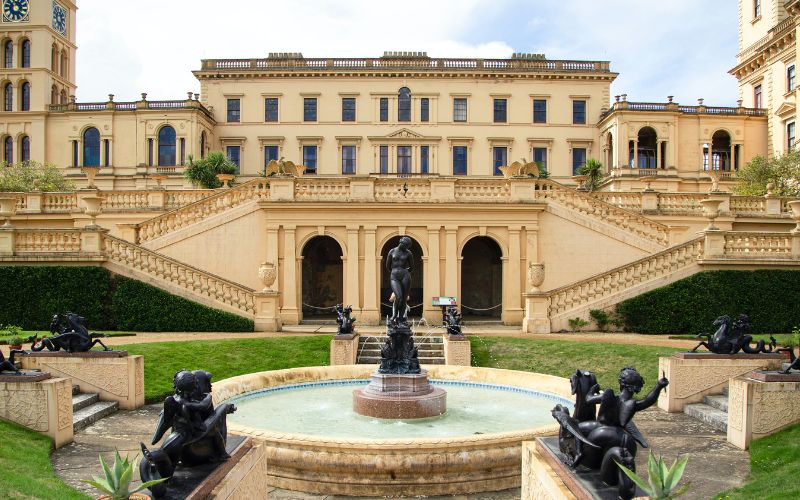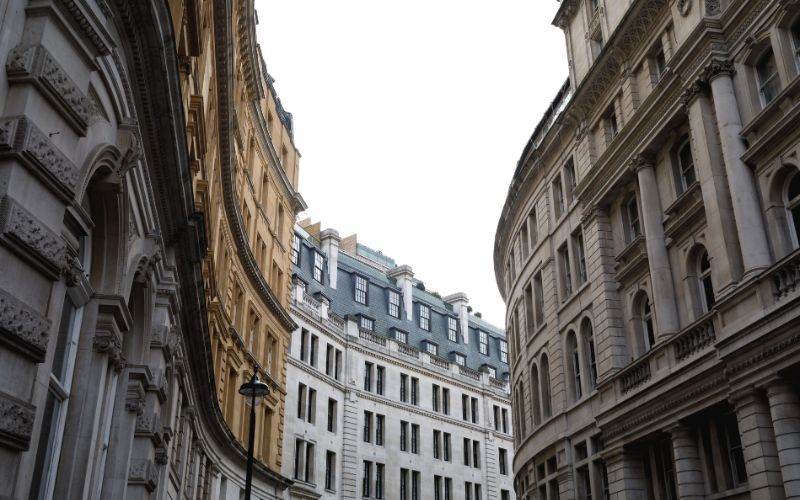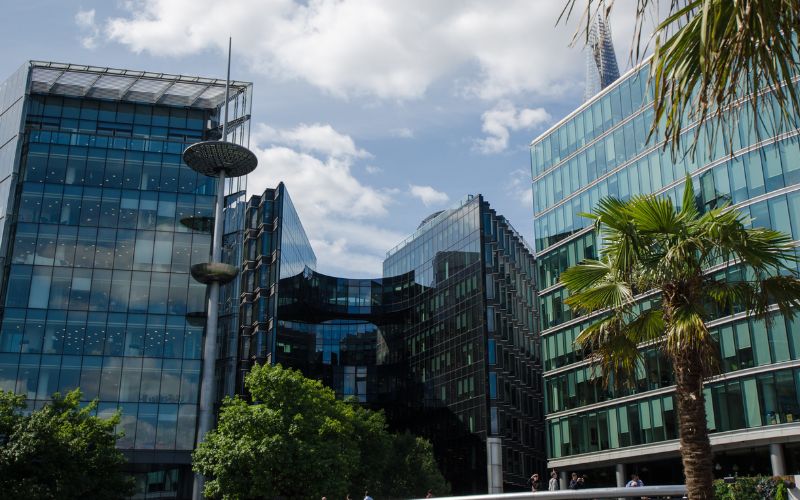Highclere castle, Hampshire, constructed in 1679
Best known for its role in the iconic TV series ‘Downton Abbey’, Highclere castle has over 200 rooms and overlooks 5,000 acres of land in the Jane Austen county, Hampshire.
Whilst 1679 is often referred to as Highclere’s official year of construction, written records show that the land was given to the Bishops of Winchester during the reign of the Anglo Saxons and was the site of a medieval castle in 749.
During the castle’s 800-year lifespan, the first redevelopment plans came from Bishop William of Wykeham in the late 14th century. However, the property was confiscated from the church in 1551 by King Edward VI.
The castle went on to have several different owners until a manor house was constructed in its place at the beginning of the 17th century.
Politician, Sir Robert Sawyer, bought the property in 1679. The castle was redeveloped into a property known as ‘Highclere Place House’ with the help of renowned landscape architect, Lancelot Brown.
The building we see today was the design of architect, Sir Charles Barry, who also worked on the Houses of Parliament. It was his shared vision with the third Earl in 1838 that Highclere would portray a Jacobean style exterior whilst maintaining the traditional elegancy of the early Victorian era within.
However, it would take the fifth Earl of Carnarvon to shift the public’s focus away from the building’s extravagant style. The fifth Earl, George Herbert, became famous for his archaeological expedition that discovered the tomb of Pharaoh Tutankhamun in 1922. He died in Cairo shortly after his discovery, with many speculating that his death was the result of an ancient curse placed upon the mummy’s tomb.
Highclere Castle’s rich history is still the subject of worldwide fascination to this day, with the late Queen Elizabeth the current Earl’s Godmother and a reported fan of Downton Abbey. Now, it remains to be seen whether the new King and Queen will make an appearance at historical Highclere anytime soon.

Image: Expedia
Hampton Court Palace, Surrey, constructed in 1514
History buffs and ghost hunters alike have, for many years, arrived in droves to see the beautiful baroque Hampton Court Palace, situated just outside of London in East Molesey, Surrey.
The Grade I listed building was built in 1514 by Cardinal Wolsey, then Lord Chancellor for Henry VIII. What started out as a country house was soon turned into a magnificent Tudor palace with more than 1,000 rooms and designed to emanate the height of European architecture at the time.
Wolsey’s design reflected his intention to host, not just the English royal circle, but the European monarchs too. Having invested huge sums of money into his project, it soon caught the eye of King Henry VIII who wanted the palace for himself.
By the 1530’s, Hampton Court Palace belonged to Henry VIII. Many believe either; he took it for himself or Cardinal Wolsey gifted him the property as he began to fall out of favour with the monarch.
Henry’s influence on the palace saw it turned into a hotel, theatre, and leisure complex, earning itself the nickname ‘pleasure palace’. Often used to host the grandest of guests, the palace could accommodate around 800 people. This prompted Henry to have the main kitchen enlarged and extended, enabling it to produce up to 1,600 meals a day.
Following Henry VIII, Hampton Court was home to many monarchs including Charles I who was placed under house arrest at the palace. Even Oliver Cromwell resided here, saving the palace from demolition.
When the monarchy was restored, Charles II commissioned the long canal in the palace grounds; but the most recent and notable renovations came under the rule of King William III and Queen Mary II in 1689.
Renowned English architect, Sir Christopher Wren, was commissioned by the royal couple to demolish and develop a new modern palace.
However, Wren rejected the notion (not wanting to alter the original building design) and instead built the Fountain Court, leaving much of the original Tudor property untouched. He was later approached by Queen Anne in 1710 to remodel the Chapel of which he obliged.
Other royals and architects throughout the years have left their mark on the palace, but in 1986 a fire broke out. The Queen, accompanied by Prince Charles, visited the site a few days after the blaze was put out.
By tracing the original drawings and designs of Sir Christopher Wren, the affected area of the build was able to be restored by Principal Architect, Michael Fishlock, and has now become part of this palace’s complicated history.

Image: thetouristtrail.org
Hever Castle, Kent, constructed in 1383
Originally constructed in 1383, Hever Castle began its royal journey as a medieval defensive castle with a large hall and a few outbuildings. A gatehouse was one of its first additions, commissioned by then owner, Baron James Fiennes.
The castle’s most famous inhabitants, however, contributed the most to the building’s interior design and structural capabilities – the Boleyns.
They transformed the castle into a regal Tudor residence fit for a queen, which their daughter Anne Boleyn would become.
King Henry VIII often visited the castle during his courtship with Anne, with many historians arguing that the castle played a key role in the formation of the Church of England.
Following the doomed marriage between Henry VIII and Anne Boleyn, which ended with an accusation of witchcraft and Anne losing her head, the Boleyn tribe were cast out from Henry VIII’s court and Hever castle. Eventually, Henry VIII’s fourth wife, Anne of Cleves, became the new royal resident.
In the centuries that followed, the castle fell into decline until William Waldorf Astor, dubbed ‘America’s richest man’, bought the estate in 1903.
He is credited with restoring the castle to its former splendour, adding a few modern touches, including the Astor Wing, and orchestrating the landscaping of the grounds and gardens - as seen today.
Ultimately, Astor wanted to refurbish the castle to mirror the luxury living of the early 20th century upper class whilst preserving the regal Tudor elements of the property. Hever soon became Astor’s home, reflecting his love for history and lavish lifestyle.
The last time King Charles went to Hever Castle was in 1982, accompanying his mother the late Queen, when the estate was owned by Astor’s grandson. Perhaps it’s time for another visit?

Image: historichouses.org
Curious about the properties we’ve worked on? Browse our case studies here. If you’ve gotten this far, why not check out part 1.
How can we help?
Our team of Chartered Building Surveyors are working closely with property owners, lenders, and estate agents across London and the South Coast to proactively navigate a changing horizon. From ensuring new builds and conversions are delivered on time and in budget, to delivering EPC and MEES upgrades on behalf of landlords.
Read more about our solutions here:
Technical due diligence
Project management
Dilapidations consulting
Cost management
Monitoring Surveying
Party Wall
Contract Administration
Planned Preventative Maintenance
Alternatively, email us at enquiries@sillencehurn.co.uk or call our Southampton team on 02380 014786 or London at 020 3143 2128





